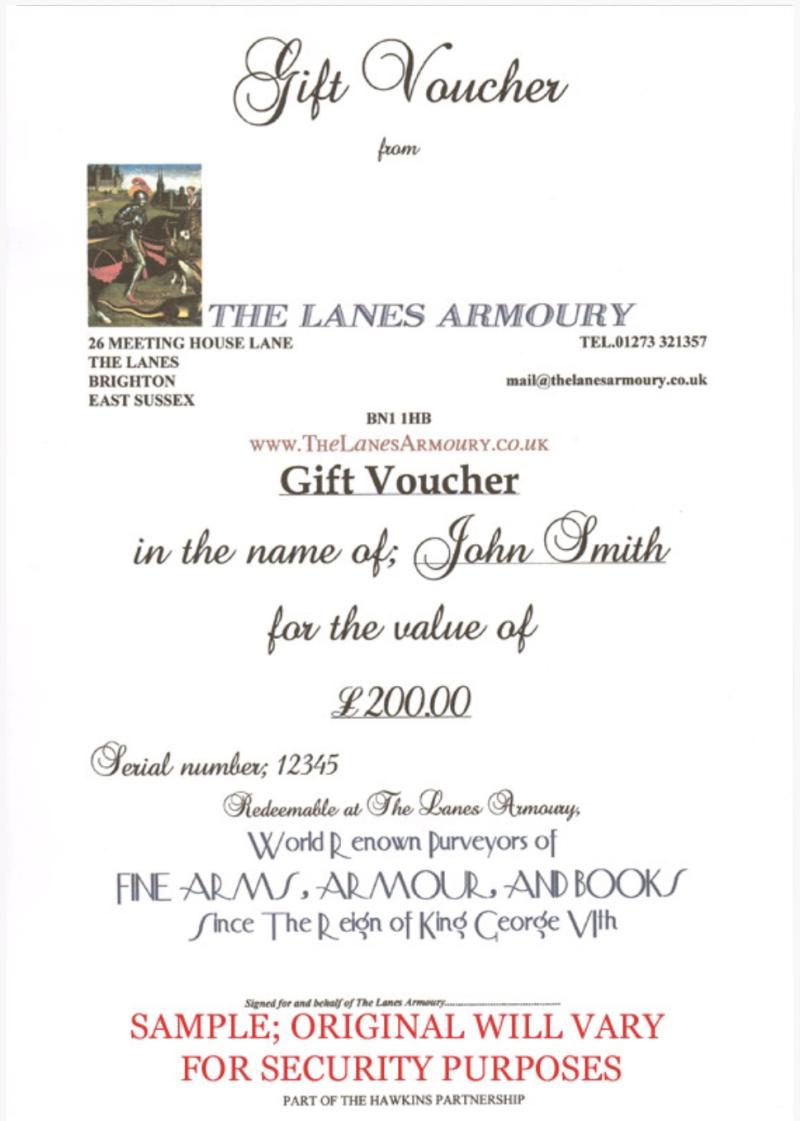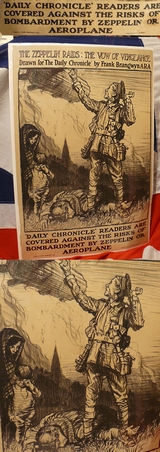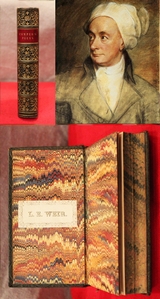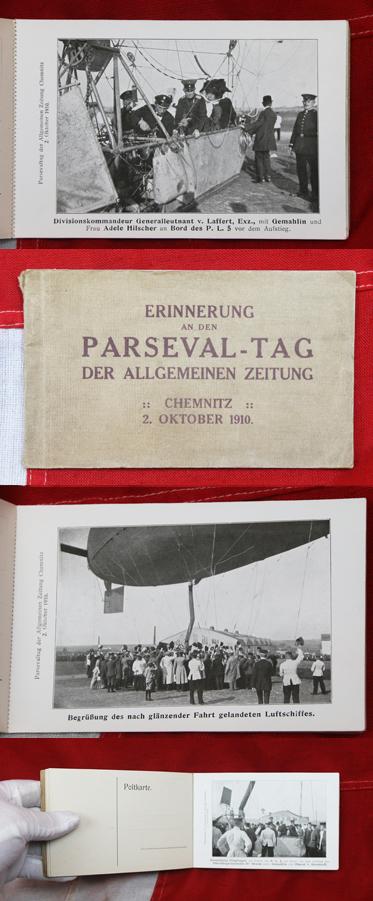Imperial German Peaked Cap for Fire Protection Officer of Lubeck
Blue wool cloth with two red piping borders and single red and brass disc roundel. In super condition, worn areas to the lining and sweatband, as to be expected, but the peak and dark blue cloth are superb. Made in WW1 Imperial period, worn right through the later Weimar period and into the early Third Reich era. When used in the Third Reich era, by the Fire Protection Police, it was an organization that was an auxiliary to the Ordnungspolizei, and during the war was absorbed into the SS. Feuerschutzpolizei. By 1938, all of Germany's local fire brigades were part of the ORPO. Orpo Hauptamt had control of all civilian fire brigades. ORPO's chief was SS-Oberstgruppenf?hrer Kurt Daluege who was responsible to Himmler alone until 1943 when Daluege had a massive heart attack. From 1943, Daluege was replaced by Obergruppenf?hrer Alfred W?nnenberg until May 1945.
ORPO was structurally reorganised by 1941. It had been divided into the numerous offices covering every aspect of German law enforcement in accordance with Himmler's desire for public control of all things.
A very attractive and interesting piece in super order and totally complete. read more
285.00 GBP
The Lanes Armoury Gift Voucher Can Be The Perfect Solution
A Gift Voucher is often the ideal solution to leave the decision of the item to choose to the person you wish to gift. They can select any form of item whatsoever, such as samurai arms and armour, militaryantiques and militaria or books, and most importantly, they do not expire. They are valid forever. They are available from us for all values, from only £15 up to £15,000, and as required, and are entirely bespoke to the recipient. All are unique and customised for each and every occasion. We have priced this example in the gallery at £200 and the image shows our example £200.00 voucher, but you can specify any alternative amount at all in the 'comment' section in the Webstore Order page, or call us direct.
A pdf voucher can be sent to you within the hour during opening times from the shop. read more
200.00 GBP
A Very Fine Pair of Cased WW1 Great War Imperial German Epaulettes
For the Imperial German 40th Infantry officer. Used by the German regimental officers that fought in the trenches with Adolf Hitler's infantry, and apparently the 40th relieved Hitler's company within the List Regiment, the Bavarian Reserve Infantry Regiment 16 (1st Company of the List Regiment). In their original storage case in mint condition overall. Mid blue cloth background with gilt crescent and Infantry number 40. Red back cloth. During the war, Hitler served in France and Belgium in the Bavarian Reserve Infantry Regiment 16 (1st Company of the List Regiment). He was an infantryman in the 1st Company during the First Battle of Ypres (October 1914), which Germans remember as the Kindermord bei Ypern (Ypres Massacre of the Innocents) because approximately 40,000 men (between a third and a half) of nine newly-enlisted infantry divisions became casualties in 20 days. Hitler's regiment entered the battle with 3,600 men and at its end mustered 611. By December Hitler's own company of 250 was reduced to 42. Biographer John Keegan claims that this experience drove Hitler to become aloof and withdrawn for the remaining years of war. After the battle, Hitler was promoted from Sch?tze (Private) to Gefreiter (Lance Corporal). He was assigned to be a regimental message-runner The List Regiment fought in many battles, including the First Battle of Ypres (1914), the Battle of the Somme (1916), the Battle of Arras (1917), and the Battle of Passchendaele (1917). During the Battle of Fromelles on 19?20 July 1916 the Australians, mounting their first attack in France, assaulted the Bavarian positions. The Bavarians repulsed the attackers, suffering the second-highest losses they had on any day on the Western Front, about 7,000 men read more
295.00 GBP
A Very Rare Original,1930's Aeronautical Collection of Wide, Wool Felt, Sleeve Patches for Early Airships & Aeroplanes
Shoulder sleeve insignia. For the Farman Biplane USA, Astra Monoplane, Curtis Biplane USA, Delagrange Biplane, Ferber Biplane, Bleriot Monoplane, French Military Dirigible, Wright Biplane, Reid-Curtis Flying Boat USA, and the Mengin Monoplane.
In the early 20th century US military the 81st Infantry Division "Wildcat" is generally agreed to have been first U.S. Army unit authorised shoulder sleeve insignia or SSI. In 1918, during World War I, the 81st Division sailed for France after training at Fort Jackson, South Carolina. On their left shoulder the men of the division wore an olive drab felt patch with the silhouette of a wildcat - after Wildcat Creek, a stream that flows through Fort Jackson. When men of the other fighting divisions challenged the right of 81st soldiers to wear the patch, General John J. Pershing ruled that the 81st could keep this distinctive insignia. He also suggested that other divisions adopt shoulder patches of their own. This patch was officially adopted by the U.S. Army on October 19, 1918. The first patches were often primitive but by World War II, the manufacture was regulated.
By World War II, all army groups, field armies, corps, and divisions, as well as all major Army commands, had unique SSI. These SSI would often be created with symbolism alluding to the unit's formation. Examples include the 82nd Airborne Division, which included an "AA" on its patch alluding to the "All-American" soldiers from every state that made it up, and the 29th Infantry Division, which included blue and grey to allude to soldiers that made it up being from states on both sides of the American Civil War.
Most US formations had unique patches which varied greatly in size and makeup, with the exception of U.S. armoured divisions (as well as 1st Armoured Corps and the U.S. Army Armour Center & School), all of which adopted the same patch (a yellow, red and blue triangle with a symbol for armour in the middle). Each division and I Armoured Corps then included its number in the upper yellow portion of the patch to distinguish it. The SSIs of those armoured units which survived into the Cold War became irregular pentagons (some units later than others) with the addition of rectangular section at the bottom, bearing the division's nickname or "U.S. Army Armour Centre". In the past we have individual examples sell for a few hundred pounds, but we have never seen a complete, or near complete, set of 10 before. They would look stunning bespoke framed. Wide sleeve type patches, approx 6 x 3 inches.
read more
1495.00 GBP
A Most Fine and Rare Original Frank Brangwyn WW1 Propaganda Poster
This is a superb original work of art that would look simply amazing framed and placed in the right setting.
After the June 1915 raids, when air raids intensified, the Daily Chronicle offered its readers £150 for damage to homes and their contents by hostile aircraft, £100 for fatal injuries, £30 for damage inflicted by the enemy but not by air power and £10 to cover medical fees for non-fatal injuries. The Zeppelin Raids: the vow of vengeance. Drawn for "The Daily Chronicle" by Frank Brangwyn A.R.A. 'Daily Chronicle' readers are covered against the risks of bombardment by zeppelin or aeroplane.British infantryman, full-length standing figure, looking up and shaking his fist at a departing Zeppelin. At his feet lies the body of an old woman who is mourned by a small boy and woman, left. In the background a skyline of bomb damaged and smoke shrouded buildings text: "THE ZEPPELIN RAIDS: THE VOW OF VENGEANCE Drawn for 'The Daily Chronicle' by Frank Brangwyn ARA" (in 2 lines upper edge) & "'DAILY CHRONICLE' READERS ARE COVERED AGAINST THE RISKS OF BOMBARDMENT BY ZEPPELIN OR AEROPLANE" printed by The Avenue Press, Ltd., Bouverie St., London, E.C. Original lithograph poster.There are other original surviving examples of this original poster in both the Imperial War Museumin London and the Library of Congress in America. Posters of this kind are rare simply due to the fact they were considered as disposable propaganda artworks and were thus disposed of when no longer needed after the wars end. Brangwyn trained at the Royal College of Art, and was an apprentice with the designer William Morris. A highly regarded and prolific draughtsman, he was an established Royal Academician by the beginning of the First World War.
Frank Pick, General Manager of London Underground and a notable supporter of high quality design, commissioned Brangwyn to produce morale raising posters for London commuters. Brangwyn also worked extensively for war charities, producing many posters in support of Belgian relief, as he had been born in Bruges. Later in the war he contributed to the Ministry of Information's print series 'Efforts and Ideals' and designed posters for the National War Savings Committee.
His emotive realism was often criticised by government officials for demoralising the public. His depiction of close combat in the War Savings poster 'Put Strength in the Final Blow' was published only after some debate. The poster caused a public outcry in Germany, but ironically Brangwyn's reputation was considerably higher on the Continent. He was featured in an illustrated article in the prestigious German poster journal, Das Plakat in 1919.
Moved by the suffering and destruction of the war, Brangwyn later became a pacifist. His career continued to flourish after the war, most prominently as a painter of murals for public buildings. He is celebrated in the Brangwyn Museum in Bruges and the Musee de la Ville at Orange, France also has large holdings of his work. During World War I, the impact of the poster as a means of communication was greater than at any other time during history. The ability of posters to inspire, inform, and persuade combined with vibrant design trends in many of the participating countries to produce interesting visual works. At the start of the twentieth century he was the one British artist whose work was revered by the European cognoscenti, and the Japanese recognised in his artistic endeavours a love of simplicity, geometric compositions, and clarity of colour. He worked for Bing and Tiffany and produced murals for four North American public buildings. A supremely charitable man with a reputation for being irascible; a pacifist whose brutal WWI poster Put Strength in the Final Blow (1918) reputedly led the Kaiser to put a price on his head.
The man whom G K Chesterton described as
‘the most masculine of modern men of genius’ could also produce exquisitely delicate and serene works like St Patrick in the Forest (Christ’s Hospital murals); and his oils are as voluptuous in colour and form as his furniture is minimalist. Original WW1 and WW2 Posters are becoming hugely popular yet some are still very affordable, prices for nice examples are reaching well into the thousands over the past few years now. If a 1920's Russian movie poster of the Battleship Potemkin will fetch over £100,000 GBP, the potential for the values of fine propaganda posters by the great artists of their day could be immense 20 x 30.25 inches read more
625.00 GBP
Very Good Princess Mary Box, Complete With Original Personal Letters, Paperwork and Original Contents To Essex Regiment Regular
It is so rare to have a Mary Box that is not only personally identifiable but with much of original contents complete. This makes this a most exceptional and unique example.
Gifted to '4239, H.Scrutton of the Essex regiment' who served as a regular throughout the Empire from 18th June 1894 to 24th March 1916. He was an 'Old Contemptable' and awarded the 1914 Mons Star, South Africa medal and four bars General Service Medal and LSGC in 1912 plus numerous others. The original Princess Box containing an original and intact tobacco packet, empty cigarette packet, a Christmas card from Princess Mary in its envelope, a photo of Princess Mary, and a signed gift note from the Princess. Plus a note written of Mr Scrutton's military career. The photo shows a Chinese Republic banknote, not connected to the set and sold seperately. They were sent to the British troops in the frontline trenches in WW1 at Christmas 1914. During World War One King George V and Queen Mary got very involved in active war work. The King mainly visited battlefields (as recorded on the King at the Front postcards) while the queen organised clothing drives, visited hospitals and other welfare organisations. Princess Mary, then 18, often accompanied the Queen and according to the book Princess Mary, Viscount Lascelless became intensely concerned, with Christmas looming, about the well-being of the soldiers and sailors serving far from home. With her parents consent the following letter of appeal was published in November 1914.
' For many weeks we have all been greatly concerned for the welfare of the soldiers and sailors who are so valiantly fighting our battles by land and sea. Our first consideration has been to meet their more pressing needs and I have delayed making known a wish that has long been in my heart, for fear of encroaching on other funds, the claim of which have been more urgent. I want you all to help me send a Christmas present from the whole nation to every sailor afloat and every soldier at the Front. On Christmas Eve, when, like the shepherds of old, they were wont to hang out their stockings, wondered what the morrow had in store. I'm sure that we should all be happier to feel that we had helped to send our little token of love and sympathy on Christmas morning something that would be of useful and permanent value, and the making of which may be the means of providing employment for trades adversely affected by the war. Could there be anything more likely to hearten them in their struggle than a present received straight from home on Christmas Day Please will you help me Mary".
In support of this appeal many periodicals of the day published or referred to her letter.
The following example appeared in the Illustrated War News of 4 November 1914 'Princess Mary is appealing for help to send a Christmas present, from the Nation, to every Sailor afloat and every Soldier at the front. Remittance should be addressed to H.R.H. the Princess Mary, Buckingham Palace, S.W., the envelopes marked Sailors and Soldiers Christmas Fund. The appeal was very successful for it had reached 131,000 Pounds by 16 December .It was initially decided that the Gift would be received by every sailor afloat and every soldier at the Front wearing the King's uniform on Christmas Day 1914. The difficulty for the committee was deciding how many to get manufactured. They calculated that 145,000 sailors including Royal Marines and 350,000 soldiers including the Indian Contingent qualified. It was therefore calculated that between 55 and 60,000 pounds would be needed to cover the cost of nearly 500,000 gifts. The final Fund total was reported by the Committee on 30 June 1919 as 193,667 pounds 4s and 10d. Monies from the fund is also reported as having been used, to buy War Bonds and, in War Loans. The funds that remained at the end were apparently transferred to Queen Mary's Maternity Home founded for the benefit of the wives and children of sailors, soldiers and airmen of the newly formed Royal Air Force. Abridged from an original article by Grahame Barber. 2nd Lieutenant R C Leach of the 1st Battalion, King's Own Royal Lancaster Regiment wrote to his mother describing Christmas 1914:
I think we must have had a decidedly more cheerful Christmas than you at home. For a start on getting into billet I found 15 parcels waiting for me. They had a special Post Office bag for them. Well on Christmas morn I spent till about 1.30 issuing presents to the men; both yours which were very welcome and those sent in bulk to be divided amongst the troops, each regiment getting a certain share. There were also Princess Mary's presents which consisted of a packet of cigarettes, a pipe, a packet of tobacco and a Christmas card from King and Queen. Also in the gallery a photo [for information only] of a soldier opening his Princess Mary Gift Tin, Christmas 1914. read more
295.00 GBP
A Most Decorative Imperial German WW1 Soldiers Zeppelin Flask
This is a superb WW1 German Reservists flask (Reservistenflasche). A glass schnapps flask encased in a decorative enamelled metal jacket, with a lanyard in the black, white,black and red colours of the Imperial German Reich. They were made by between 1871 and 1918, for sale to conscripts, wives or sweethearts of soldiers as a memento of their service time. The front and rear of the flask are covered in military themed vignettes, with, a military regimental panel attached to the front, and to the rear a rotating panel surrounded with picture portraits of pretty ladies. The lid is a cup of a soldier sitting astride a Zeppelin that turns to become a drinking cup. Named for the Minden Regt. The figure on the Zeppelin in lacking one arm. read more
245.00 GBP
A Wonderful Collection of Cowper's Evocative Poetry. Stunningly Bound
A wonderful size pocket edition. If there was ever a single poet who should be read by every higher education student Cowper is the one. Poems by William Cowper of the Inner Temple. In two books, within this single volume of 480 pages. Printed for Longman and Co. Paper Ex Libris label of L E WEIR. George Cowper was an English poet and hymnodist. One of the most popular poets of his time, Cowper changed the direction of 18th century nature poetry by writing of everyday life and scenes of the English countryside. In many ways, he was one of the forerunners of Romantic poetry. Samuel Taylor Coleridge called him "the best modern poet", whilst William Wordsworth particularly admired his poem Yardley-Oak. He was a nephew of the poet Judith Madan. The stages of William Cowper's life: forced into a career in the law that he did not want, forbidden from marrying the woman he loved, and insensed by certain religious and political views of his cousin, can be found within the lines of his verse. His words very much encapsulate the zeitgeist of the late 1700s. The religious tone of The Task, its domesticity, and its treatment of such topics as slavery and consideration for animals, are all anticipated themes associated with the evangelical revival which began in the late 1780s. The clash between Cowper's horror at his cousin's theories and his sense of family and personal obligations unleashed a great burst of creative energy. In the four months from December 1780 to March 1781 Cowper composed 2700 lines of verse, moral satires, in pentameter couplets. This portrait of a man divided particularly demonstrates the conflicting nature of the era. In decorative full calf bindings. Externally beautiful with most handsome tooling with only a little wear to the extremities. Generally very bright and clean with just occasional light spotting on the last two pages. 5.25 x 3 x1 inches approx. read more
135.00 GBP
A Rare King Airship Co. of Washington, USA, an Original & Historic, One Share Stock Certificate, Signed and Dated 7th August 1920
This would make an intriguing a unique gift, especially for a devotee of early aeronautica, and the earliest flying machines, and would look beautiful suitably framed.
On December 17, 1903, the Wright brothers were the first to fly in a powered and controlled aircraft. Previous flights were lighter than air vehicles, gliders (control but no power) or free flight (power but no control), but the Wright brothers combined both, setting the new standard in aviation records.
There have been many booms and busts in the aviation industry. The earliest known aviation stock certificate for a company that actually made a flying airship called the Novelty Air Ship Company in 1888. The Novelty Air Ship Company manufactured the vehicle for Professor Peter C. Campbell who was the inventor. Unfortunately, the air ship was lost at sea in 1889 while being test flown by Professor Hogan during an exhibition flight. This historic document was printed by the Goes Company and has an ornate border around it with a vignette of a Bald eagle. This item has the signatures of the Company’s Secretary and the President and is over 100 years old. read more
235.00 GBP
A Most Rare Airship Parseval Tag 8 Postcard Booklet Set, Chemnitz, Dated 2nd October 1910. a Wonderful Piece of early Airship Aeronautica & Postal Service Ephemera
Parseval day 2nd October 1910, 8 postcard booklet erinnerung an den parseval-tag. Chemnitz
The Parsevals were 22 airships built between 1909 and 1919 by the Luft-Fahrzeug-Gesellschaft (LFG) following the design of August von Parseval. In the 1920s and 1930s, three more airships were built following the Parseval-Naatz (PN) design.
As with the rival Zeppelins, the airships were, in both English and German, referred to by the name of the inventor. (In German, the nouns were masculine, that is, "der Parseval", "der Zeppelin".)
In contrast to the Zeppelins, the Parsevals were non-rigid or semi-rigid airships, with little or no stiffening structure inside the fabric envelope. The Zeppelins had a rigid internal framework made of duralumin. Both types relied on hydrogen gas to provide lift.
Original early Parseval airship postcards are very collectable indeed, and can fetch from £30 to £40 each, but a near complete book of 8 unused cards is really rare to find and a great aeronautical gem, plus with early air post connections read more
245.00 GBP











